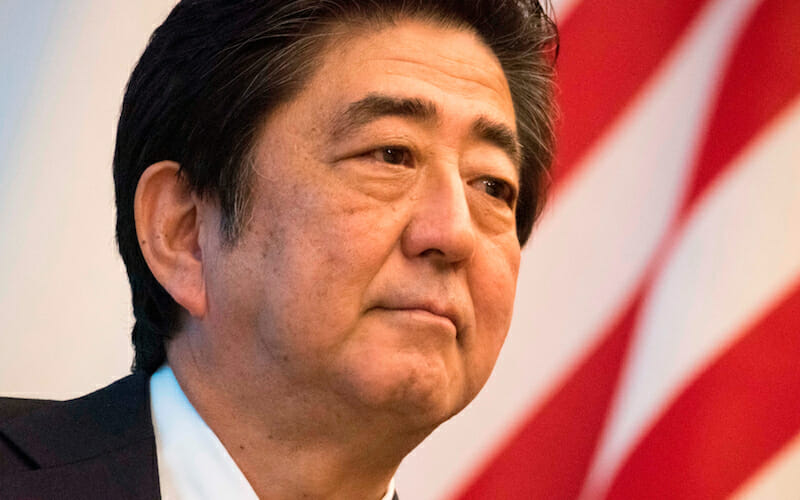
East Asia Is Losing Faith in the U.S., and It’s Not a Bad Thing
Six years after the Obama administration’s strategic pivot to East Asia, the United States is militarily invested in the region more than ever. The Pentagon continues to increase the deployment of troops to American bases in Japan and South Korea. Threat of a nuclear war with North Korea plagues the headlines, and persists as the Trump administration’s biggest foreign policy challenge so far.
Outside of ramping up the U.S.’s regional military capabilities, however, the White House is pursuing a rather incoherent and messy East Asia policy. The president began his term challenging longstanding diplomatic traditions with a call from Taiwan, only to affirm the One China policy a couple of months later. Similarly, he reprimanded Japan and South Korea for not doing enough heavy lifting as allies before stressing that there is no room to doubt the security alliance. The U.S. has yet to appoint an ambassador to South Korea, and its regional trade strategy is alienating to say the least.
The fickleness of the Trump administration’s policy in East Asia is confusing traditional regional partners, and pushing state actors to look out for themselves. Out of development and security concerns, East Asia is pivoting away from the U.S. sphere of influence and rebalancing power internally.
In the absence of U.S. economic engagement, alternative trade agreements have been negotiated under regional leadership, enhancing autonomy and collaboration within the Asia-Pacific. The hallmark of such economic achievements is the successful finalization of the Comprehensive and Progressive Agreement for Trans-Pacific Partnership (CPTPP) among 11 nations, led by Japan. Representing over 13% of the world’s GDP, the new TPP is set to become the region’s largest free trade agreement, and signals a new direction of East Asian development without the United States.
Japan has stepped forth and assumed a greater leadership role as the key negotiator of the TPP, flexing its influence as a major economic power. Moreover, the Abe cabinet has worked to improve China-Japan relations out of security and trade concerns. As the United States chooses to align its economic interests differently from that of the Asia-Pacific, it is no surprise that Asian states will also drift away from the U.S. to pursue their own national goals.
The Philippines is another traditional U.S. ally who has been inching out of the American camp for development reasons. Seeking to increase its economic profits, the Philippines recently announced plans of a joint-exploration for oil and gas reserves with a Chinese state firm in contested areas of the South China Sea. Facing the reality of a United States preoccupied with North Korea, the Philippines is forced to be proactive in improving its relationship with China for economic and security benefits. Direct, bilateral talks without the added complexity of U.S. strategic interests have enabled the Philippines to effectively address its security concerns and embrace regional cooperation.
South Korea’s diplomatic efforts to engage North Korea during the 2018 PyeongChang Olympics, despite strong objections from the White House, also reflects the diminishing regional faith in the United States’ role as a leader and peacekeeper in East Asia. The Trump administration’s aggressive attitude towards North Korea has heightened the possibility of military conflict in the Korean peninsula, much to South Korea’s dismay. Trump’s insensitivities to South Korea’s fear of entering an armed conflict with North Korea is undermining the credibility of a U.S. security alliance. After all, it would be Seoul that gets nuked, not Washington. Thus, driven by growing security concerns, South Korea also decided to act independently from the United States. While South Korea succeeded in engaging the Kim regime through diplomacy, the larger implications of this action are consistent with a decreasing perception of the U.S. in the Asia-Pacific.

East Asian confidence in the United States as an irreplaceable economic and security partner is rapidly eroding. The Trump administration’s protectionism and America First policies in the past year have deconstructed much of the prestige and trust the U.S. has enjoyed in the region.
This isn’t necessarily a bad thing. Diminishing U.S. influence might actually bring forth new policy and collaboration opportunities that could benefit east Asian states overall.
For starters, U.S. presence in East Asia is traditionally viewed to have a “cork in the bottle” effect in curbing the military development of antagonistic states. This effect has also been applied to checking the ambitions of China, defending the sovereignty of Japan, and maintaining overall stagnation in the power dynamics of East Asia. Specifically, U.S. presence has constructed a narrative of East Asian states taking part in a U.S.-led comprehensive regional strategy. A removal of this cork—the emergence of East Asia’s autonomy away from the United States’ sphere of influence—could lead to more interstate engagement and diverse ideas.
Without the U.S. as a regulatory, but also restrictive, actor, individual states have much more incentive to communicate effectively with their neighbors and undertake measures to reduce tension, if for nothing else but survival. The independent actions Japan and South Korea have taken already hint at this upcoming regionalism. Because the agency and interests at play under this new regional dynamic are much more complex, there will be less of a clash of the “us” versus “them” narrative. In this system, East Asian states might feel more compelled to work together, since there isn’t a clear juxtaposition of winners and losers.
It’s also unlikely for China to emerge as the new regional hegemony. Chinese economic and military power has not exceeded that of other regional states to the extent that China would appear as the natural regional leader. Japan, for example, would help balance China’s power. A new East Asian regionalism would create more structural flexibility for partnerships between big and small powers.
The United States would still play a role in the regional affairs of East Asia. It’s still the world’s largest economic and military power. However, crumbling U.S. credibility as a regional leader has opened a window of opportunity for East Asia to escape entrenchment from America’s vision of East Asia. It’s time for East Asia to take the wheel.

